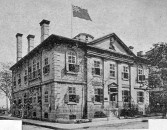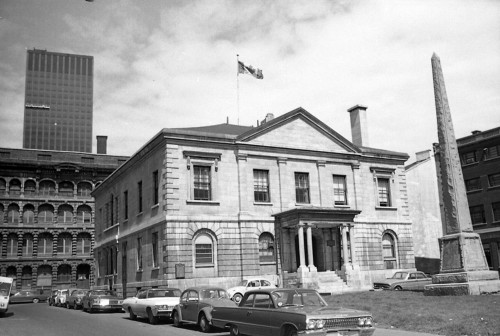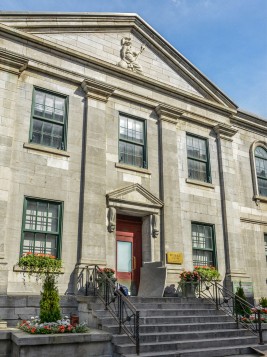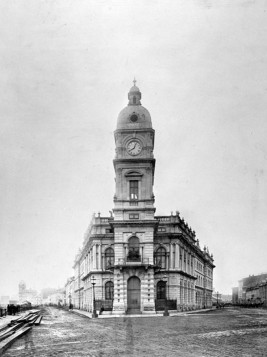Places and buildings
Old Custom House, one of our city’s architectural treasures
The Old Custom House was built more than 170 years ago. It is located at 150 Saint-Paul Street, in Old Montréal, and remains open to the public. Its main façade, however, is resolutely turned toward the St. Lawrence River, a reminder of a time when the building played a key role in Montréal’s economy.
After the Lachine Canal opened in 1825, Montréal became an essential stop for goods from Europe shipped up the St. Lawrence to Montréal. In 1832, the city was declared an official port of entry.
The harbour commissioners and the government of Lower Canada then commissioned architect, engineer and surveyor John Ostell to build this Custom House, between 1836 and 1838, on a site facing the River known as the “Old Marketplace” and today called Place Royale.
One building, two façades
The custom house, one of Montréal’s first cut-stone buildings, was originally symmetrical. Ostell designed a building that could be seen from all four sides – like a Tuscan villa – without having to create any new streets. He also designed it with two main façades, one facing the River and the other facing the city, symbolizing the importance of this building to both the harbour and the city.
Facing the River, the neo-Classical building had an elegant façade that was originally adorned with pilasters, a wide pediment and griffons. On the upper storey of all four sides of the building, Ostell placed an arched window. On the Saint-Paul Street façade, a figure of Albion, representing Britain, gazed out majestically.


Next, the Royal Insurance Company building
By about 1870, the customs offices had outgrown their premises, as the building was now too small to meet the needs of the city’s flourishing economy. They moved into the Royal Insurance Company building, next door to the original custom house, on the very site where Pointe-à-Callière, the Montréal Museum of Archaeology and History stands today. In the early 20th century, the customs offices moved once again, to their current imposing home at 105 McGill Street.
And what happened to the original custom house? Starting in 1871, it was home to the offices of the Department of Revenue, before being expanded by Alphonse Raza from 1881 to 1882. Instead of adding onto the building, the architect decided to move the entire façade closer to the River, creating a controlled asymmetry. The federal government continued to occupy the building until it transferred it to Pointe-à-Callière as part of the Montréal Museum of Archaeology and History, officially opened in conjunction with celebrations to mark Montréal’s 350th birthday, in 1992.


